| Srl | Item |
| 1 |
ID:
096798
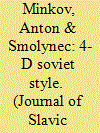

|
|
|
|
|
| Publication |
2010.
|
| Summary/Abstract |
The authors' objective is to inform the current NATO-ISAF mission in Afghanistan by examining the Soviet experience from a novel point of view; that is, to challenge the established opinion that the Soviet troops were defeated at the hands of the Afghan mujahidin and that their regime stabilization efforts were completely ineffective. Their focus extends beyond the military operations to tackle the issues related to Soviet state-building and social and economic development efforts, as well as disengagement strategies. The overall study the authors have undertaken highlights the fundamental structural factors in Afghanistan that make the Soviet experience in state-building relevant to the current reconstruction efforts in that country.
|
|
|
|
|
|
|
|
|
|
|
|
|
|
|
|
| 2 |
ID:
154575
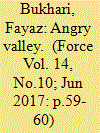

|
|
|
| 3 |
ID:
119601
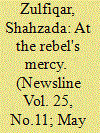

|
|
|
| 4 |
ID:
163763
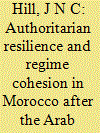

|
|
|
|
|
| Summary/Abstract |
This article argues that Morocco's competitive authoritarian regime is more resilient today in certain key respects than it was when the Arab Spring began. Drawing on Levitsky and Way's dimension of organisational power, the article contends the regime was sufficiently unnerved by the unrest to resort to the use of high intensity coercion as part of its response to the 20 February Movement. The article maintains that, in employing this force successfully, the regime has turned the protests into an important source of non-material cohesion for its security apparatus and thereby enhanced its ability to defend itself from similar challenges in the future.
|
|
|
|
|
|
|
|
|
|
|
|
|
|
|
|
| 5 |
ID:
115425


|
|
|
| 6 |
ID:
115387


|
|
|
| 7 |
ID:
129603
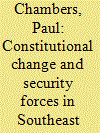

|
|
|
|
|
| Publication |
2014.
|
| Summary/Abstract |
Achieving civilian control of security forces through constitutional reform processes has been a major challenge for young democracies or democratizing countries in Southeast Asia. In many cases, governments seeking to establish or consolidate civilian control have been faced with coups d'état or the threat of coups. The successful enshrinement of laws reining in security force adventurism has often accompanied compromises which at most provide militaries with considerable latitude in their areas of decision-making or at least protect soldiers from judicial prosecution. Ultimately, the constitutional incorporation of security forces into embedded political life is no easy task. This article examines two country cases of "defective" democracies. In each case, security forces have moved towards becoming more integrated under the constitutions of civilian-led regimes. This study poses four questions. First, how did the institutionalization of security forces under civilian-led constitutions occur? Second, how did these experiences vary? Third, to what extent do these security forces today possess differing degrees of enshrined powers? And fourth, based upon these experiences, how might civilian control be sustained over time? The article argues that constitutional change acceded to by security forces more often than concessions by civilians. However, the initial bargain can later transform itself towards more or less security force interventionism depending upon three variables: the heritage of authoritarianism; the relative unity of civilians as opposed to the security forces; and threat environments.
|
|
|
|
|
|
|
|
|
|
|
|
|
|
|
|
| 8 |
ID:
143174
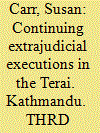

|
|
|
|
|
| Publication |
kathmandu, THRD Alliance, 2014.
|
| Description |
138p.pbk
|
|
|
|
|
|
|
|
|
|
|
|
Copies: C:1/I:0,R:0,Q:0
Circulation
| Accession# | Call# | Current Location | Status | Policy | Location |
| 058447 | 323.4/CAR 058447 | Main | On Shelf | General | |
|
|
|
|
| 9 |
ID:
097043
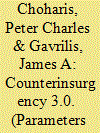

|
|
|
| 10 |
ID:
077340
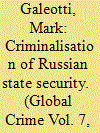

|
|
|
|
|
| Publication |
2006.
|
| Summary/Abstract |
While the Russian authorities may seek to talk up the role their security apparatus plays in combating organised crime, in fact, they are to a large extent falling prey to criminalisation. A culture of corruption and a decade of neglect have combined to create a situation in which not only do police, army, and security officers provide services to 'civilian' criminals but organised crime groupings have actually formed within them. These gangs tend to be defined by their location and legal powers, both of which can be abused for criminal ends, and they include police and military officers at the very apex of their respective command structures. There are grounds for hope now that President Putin is beginning to become aware of the practical dangers this poses for Russian national security, not least given the haemorrhage of weapons to criminal and insurgent hands, but, for the immediate future, the security apparatus will remain corrupted and criminalised.
|
|
|
|
|
|
|
|
|
|
|
|
|
|
|
|
| 11 |
ID:
119378
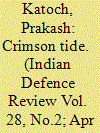

|
|
|
| 12 |
ID:
188326
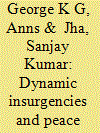

|
|
|
|
|
| Summary/Abstract |
The intended purpose of this paper is to examine the viability of political resolution as a counterinsurgency strategy. We have selected numerous political negotiation processes between insurgents and government of India in general and Mizoram in particular. The political resolution with Mizo National Front is considered as the most successful counterinsurgency operation in India. Placing this as a model, the government of India employed the strategy of negotiation with various other insurgent groups. The degree of success in Mizoram was not replicated in other insurgency theatres. This was analyzed with the help of a comparative study with other insurgent groups in India, particularly within the state of Assam. It is found that the model of Mizo resolution has been influencing the peace process that came later. And also the strategy of negotiation has been evolving into incorporating civil society groups as signatories to the final peace settlement signed between insurgents and government. This analysis of the peace process is also based on the conceptualization developed from various authors.
|
|
|
|
|
|
|
|
|
|
|
|
|
|
|
|
| 13 |
ID:
115399
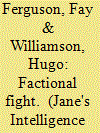

|
|
|
| 14 |
ID:
093353


|
|
|
| 15 |
ID:
109310
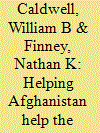

|
|
|
| 16 |
ID:
088787
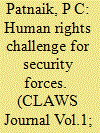

|
|
|
| 17 |
ID:
132470
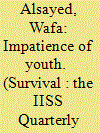

|
|
|
|
|
| Publication |
2014.
|
| Summary/Abstract |
Youth movements in the Gulf have been effective but ephemeral, sometimes manipulated by established groups or succumbing to social divisions.
In October 2012, thousands of citizens took to the streets of Kuwait City to protest an emergency decree by the emir that amended the country's electoral law in such a way as to undermine the position of the opposition within parliament. The demonstrations were unprecedented both in size and political rhetoric. An estimated 50,000 people addressed the ruler with slogans such as 'we will not let you'. Security forces used tear gas and stun grenades to break up the gatherings. Youth groups formed the backbone of the movement's leadership (at least initially) and supplied much of its rank and file. However, within months, this vibrant and defiant campaign had largely dissipated. Having failed to attain its goals, it was unable to maintain a permanent political presence. Throughout the Gulf region, other youth-led movements have suffered a similar fate. Once groups achieve their original goals or lose their initial momentum due to government resistance, they soon break down, often disappearing altogether from the political scene.
|
|
|
|
|
|
|
|
|
|
|
|
|
|
|
|
| 18 |
ID:
118506


|
|
|
| 19 |
ID:
129626


|
|
|
| 20 |
ID:
144134
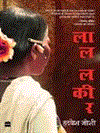

|
|
|
|
|
| Publication |
Noida, Harper Collins Publisher India, 2016.
|
| Description |
319p.pbk
|
| Standard Number |
9789351777083
|
|
|
|
|
|
|
|
|
|
|
|
Copies: C:1/I:0,R:0,Q:0
Circulation
| Accession# | Call# | Current Location | Status | Policy | Location |
| 058583 | 809.3/JOS 058583 | Main | On Shelf | General | |
|
|
|
|